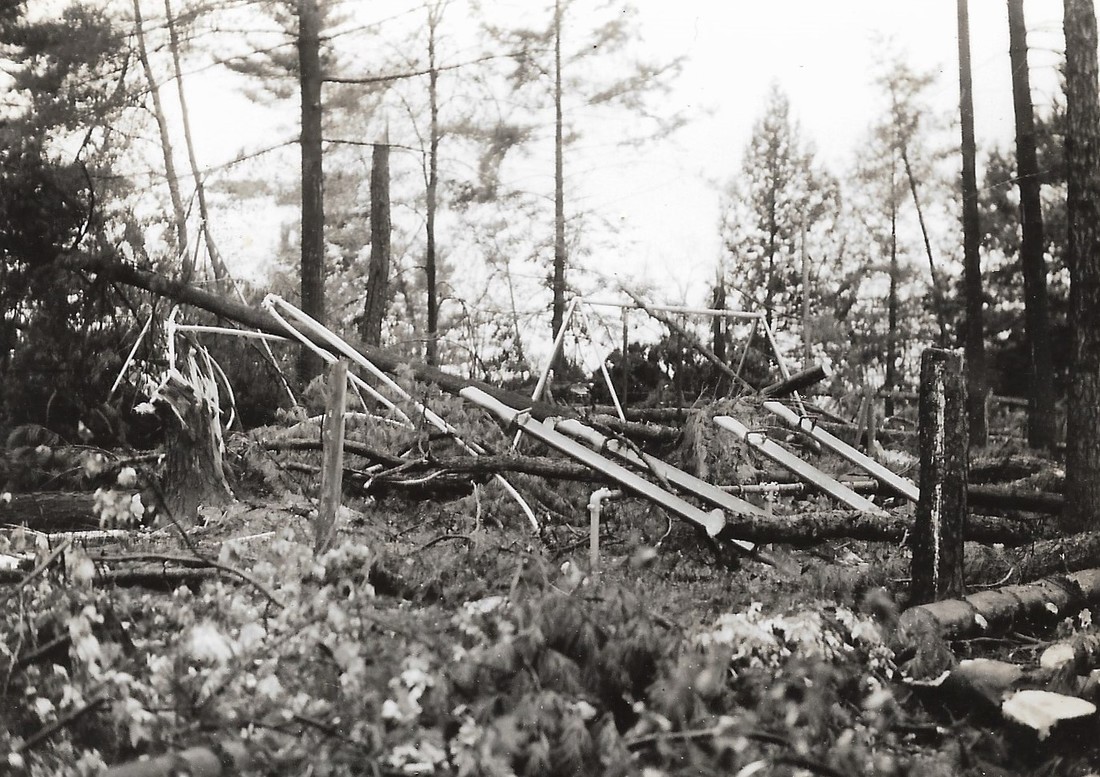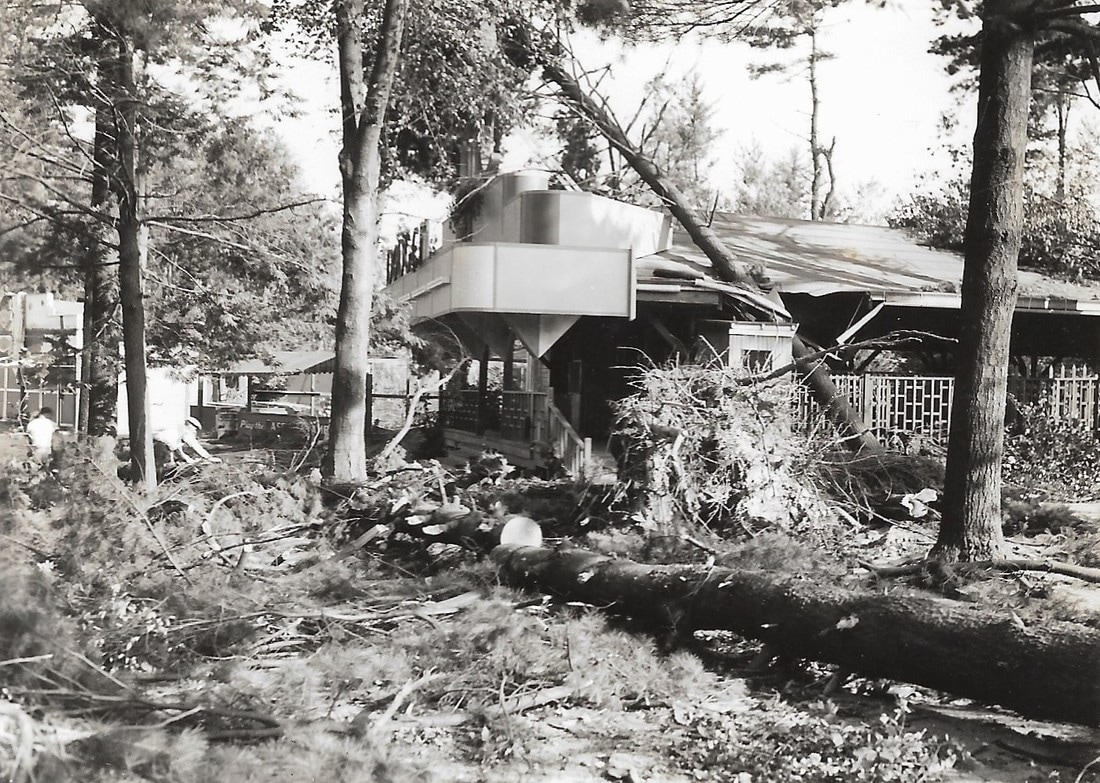According to Rural Oasis, the homes along Haverhill Road did not have electricity until shortly before the hurricane struck. Several residents on Lowell Road refused to spend $1,500 on poles, and did not reach an agreement with the electric company to bring electricity to their homes until 1939; the residents eventually were allowed to pay just a $5 deposit, with interest paid on the deposit by the electric company being used to install the poles. In 1945, seven years after New England’s most historic hurricane brought down the existing power lines of Windham, all of Windham had access to electricity. For the benefit of posterity, Rural Oasis also recorded details about the power transmission to Windham, as it would have been at the time of the hurricane.
In 1929, a project began to bring a 220,000 volt power transmission line to West Windham. The New England Power Company cleared a strip of land 350 feet wide from Monroe, New Hampshire to Tewksbury, Massachusetts, a distance of approximately 125 miles. At one time during the construction of the southern portion of the transmission line, a group of almost 100 men from the power company briefly stayed in West Windham. All of the steel for the local section of the line was sent to Anderson Station in West Windham, and delivered by truck to wherever it was needed. Once unloaded near the site, a team of horses was used to haul the steel to the site where the tower was to be constructed.
Although, New Hampshire was spared the torrential rainfall that had hit states further south, such as Maryland and Delaware, it was not spared from countless felled trees, extensive structural damage, and the sheer destructiveness of the storm. Salem, NH: Volume 1 relates an interesting account of the storm’s impact on Rockingham Park. During a race at the track, when the hurricane was not at its full strength, jockey Warren Yarberry was blown off of his horse. The track itself also suffered damage, including many stables left without roofs.
However, not all of the lumber from Windham was carted off to the shore of Canobie Lake and summarily dumped into the lake. Reverend Leslie C. Bockes, who ran the West Windham Builders’ Camp as a summer camp for inner city children, saw that much of the fallen trees in West Windham did not go to waste. With hundreds of acres of downed trees on his several hundred acre property, Bockes enlisted the help of teenage boys to clear debris and cut the lumber into more manageable sizes. There was such a great amount of fallen timber that Bockes constructed a sawmill on the property to turn what otherwise would have been wasted material, into usable, saleable lumber.

